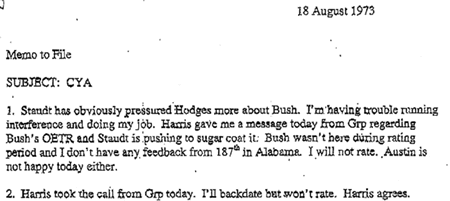
Han van Meegeren's The last supper (1940-1941)
Posted on 08/06/2006 9:05:22 AM PDT by aculeus
Frank Wynne tells the extraordinary story of Han van Meegeren, the Dutch artist whose ‘Vermeer' made him a folk hero
I've always loved a forger. It's difficult not to feel a surge of joy at the thought of an eminent critic waxing lyrical over the glories of a "17th-century masterpiece" on which the paint is barely dry. If the pinnacle of Western art is arguably Leonardo da Vinci, his shadow self in the pantheon of forgers is Han van Meegeren.
In May 1945, shortly after the liberation of Holland, two officers arrived at the studio of van Meegeren, then just a little-known Dutch painter and art dealer. The officers, from the Allied Art Commission, were responsible for repatriating works of art looted by the Nazis. They had come about a painting discovered among the collection of Hermann Göring: a hitherto unknown canvas by the great Johannes Vermeer, entitled The Supper at Emmaus.
Since the Nazis had kept detailed records, it had been easy to trace the sale of the painting back to van Meegeren. Now, they wanted only the name of the original owner so that they might return his priceless masterpiece. When van Meegeren refused to name the owner, they arrested him and charged him with treason. If found guilty, he faced the death penalty.
The artist was entirely innocent of the charges against him, a fact he could easily have proved. But in doing so, he would have to confess to a series of crimes which he had plotted for decades and which, in five short years had earned him the equivalent of $60 million. Han van Meegeren was a forger.
He loathed modern art - he thought it childish and decadent, a passing fad for ugliness which would soon fade. For years he had eked out a living painting gloomy portraits of rich patrons in a faux-Rembrandt style and had winced as he heard his work ridiculed by his peers. A prominent critic reviewing van Meegeren's second solo exhibition wrote, "A gifted technician who has made a sort of composite facsimile of the Renaissance school, he has every virtue except originality."
The time had come, van Meegeren felt, to revenge himself on his critics. He devised a plan to paint a perfect Vermeer - neither a copy, nor a pastiche, but an original work - and, when it had been authenticated by leading art experts, acquired by a major museum, exhibited and acclaimed, he would announce his hoax to the world.
His first step was concocting an ingenious mixture of pigments that "would pass the five tests which any genuine 17th-century painting must pass". Now he had only to paint a masterpiece.
The Supper at Emmaus was unlike any acknowledged Vermeer. Van Meegeren, true to his perversely moral scheme, painted it in his own style, adding only subtle allusions to works by the Dutch master, before signing it with the requisite flourish. He had it submitted to Abraham Bredius, the most eminent authority on Dutch baroque art of his day, and the critic took the bait.
Writing in the Burlington magazine, Bredius opined: "It is a wonderful moment in the life of a lover of art when he finds himself suddenly confronted with a hitherto unknown painting by a great master… And what a picture! We have here a - I am inclined to say the - masterpiece of Johannes Vermeer of Delft."
Suddenly the world was at van Meegeren's feet. The Supper at Emmaus was bought by the prestigious Boijmans Gallery in Rotterdam for the equivalent of $6 million. More importantly for van Meegeren, it was advertised as the centrepiece, the crowning glory of the gallery's exhibition, 400 Years of European Art.
During the exhibition, van Meegeren would loudly proclaim the painting a forgery, a crude pastiche, and listen as the finest minds of his generation persuaded him that his painting was a genuine Vermeer. His triumph was now complete. He had only to do what he had promised himself: to stand up and claim the work for himself, thereby making fools of his critics. Instead, within a month, he was working on a new forgery.
In less than six years, van Meegeren would paint a further six "Vermeers", earning the equivalent of $60 million. With money, came vice - he revelled in fine champagne, became addicted to morphine and was compulsively unfaithful to his wife.
He bought dozens of houses and hotels, but even then he could not exhaust his wealth, so he hid hundreds of thousands of guilders in gardens, heating ducts and under the floorboards of his many properties. Often he would forget where he had hidden the money, and 30 years after his death, the Dutch were still turning up cashboxes stuffed with pre-war notes.
As van Meegeren's addictions to alcohol and morphine took hold, and the standard of his forgeries plummeted, still experts accepted them as genuine. He discovered that, regardless of how incompetent his painting, how crude his anatomy, how uncertain the provenance, the most erudite Vermeer critics were prepared to sanctify his work. His one mistake had been to allow one of his paintings to fall into enemy hands.
No expert eye discovered van Meegeren's forgery. He was unmasked only because, after six weeks in prison, he cracked: "‘Fools!" he roared at his jailers. "You think I sold a priceless Vermeer to Göring? There was no Vermeer - I painted it myself."
There was one thing van Meegeren had not counted on: no one believed his confession. It was one of the officers who naively suggested that if van Meegeren had painted Göring's Vermeer, he could paint a copy from memory. Van Meegeren arrogantly refused. "To paint a copy is no proof of artistic talent. In all my career I have never painted a copy! But I shall paint you a new Vermeer. I shall paint you a masterpiece."
And so, surrounded by reporters and court-appointed witnesses, and supplied with liberal quantities of alcohol and morphine, he worked for six weeks painting one final "Vermeer", in a desperate attempt to prove himself guilty.
Having been denounced by the press as a traitor, a "Dutch Nazi artist", van Meegeren was now a folk hero - the man who had swindled Göring. The Reichsmarschall was told that his beloved Vermeer was a forgery while awaiting execution in Nuremberg. According to a contemporary account: "[Göring] looked as if for the first time he had discovered there was evil in the world."
In the wake of his confession and the scandal it caused, van Meegeren truly knew the fame he had craved. The trial, when it came, was a three-ring circus. Experts tripped over each other to exculpate themselves. Van Meegeren - more than the prosecuting counsel - was determined that he should be found guilty of committing these "masterpieces", but even now, experts conspired against him, arguing that at least one of his forgeries might be genuine.
In the end, however, van Meegeren got his wish: on November 12, 1947 he was found guilty of obtaining money by deception and sentenced to one year's imprisonment.
But he would never serve a day of his sentence. While prosecution and defence wrangled to secure a full public pardon from the Queen, the forger - long a consummate hypochondriac - finally succumbed to angina. He was hospitalised on the day before he was scheduled to serve his sentence and died some weeks later.
Han van Meegeren's greatest gift to the art world is doubt. If forgers throughout the ages have taught us anything, it is to re-examine why we love what we love, to overcome our obsession with simple authenticity and appreciate the work for itself. Is a minor Rothko truly worth more than the finest Ellsworth Kelly? Are we captivated by the serenity and light of a Corot watercolour, or simply the signature?
"Perhaps," as the art critic Emily Genauer wrote, "we are almost at the point of sophistication where we are able to enjoy a work of art for what it is."
Perhaps. Then again, as Theodore Rousseau pointed out, "We should all realise that we can only talk about the bad forgeries, the ones that have been detected; the good ones are still hanging on the walls."
Frank Wynne is the author of 'I Was Vermeer: The Legend of the Forger Who Swindled the Nazis', published by Bloomsbury (£14.99) on Mon.
Information appearing on telegraph.co.uk is the copyright of Telegraph Group Limited and must not be reproduced in any medium without licence. For the full copyright statement see Copyright

Han van Meegeren's The last supper (1940-1941)
Yeah, that sentence warmed my heart, too...

If I find out that van Meegeren forged this masterpiece, I'm gonna be really upset.
A good read, and the Göring item is priceless.

Say it ain't so!
Who is to the left of Christ?
She trowled on the colors and dabbed in trees in improbable locations.

The thing was, she was icing a cake.
It sure was a tasty cake, tho.
Judas, methinks.
Anyway, I happen to own a genuine Vermeer myself. It was from his black velvet period...
Heh heh heh ping
He painted Elvis too? Very cool!
Hey, isn't that Mary to Jesus's left?
Great story! Thanks!
A man after my own heart.


"Happy trees; happy trees!"
He has skills
Is that Shelly Duvall ?
Mohammed's last supper?
Disclaimer: Opinions posted on Free Republic are those of the individual posters and do not necessarily represent the opinion of Free Republic or its management. All materials posted herein are protected by copyright law and the exemption for fair use of copyrighted works.